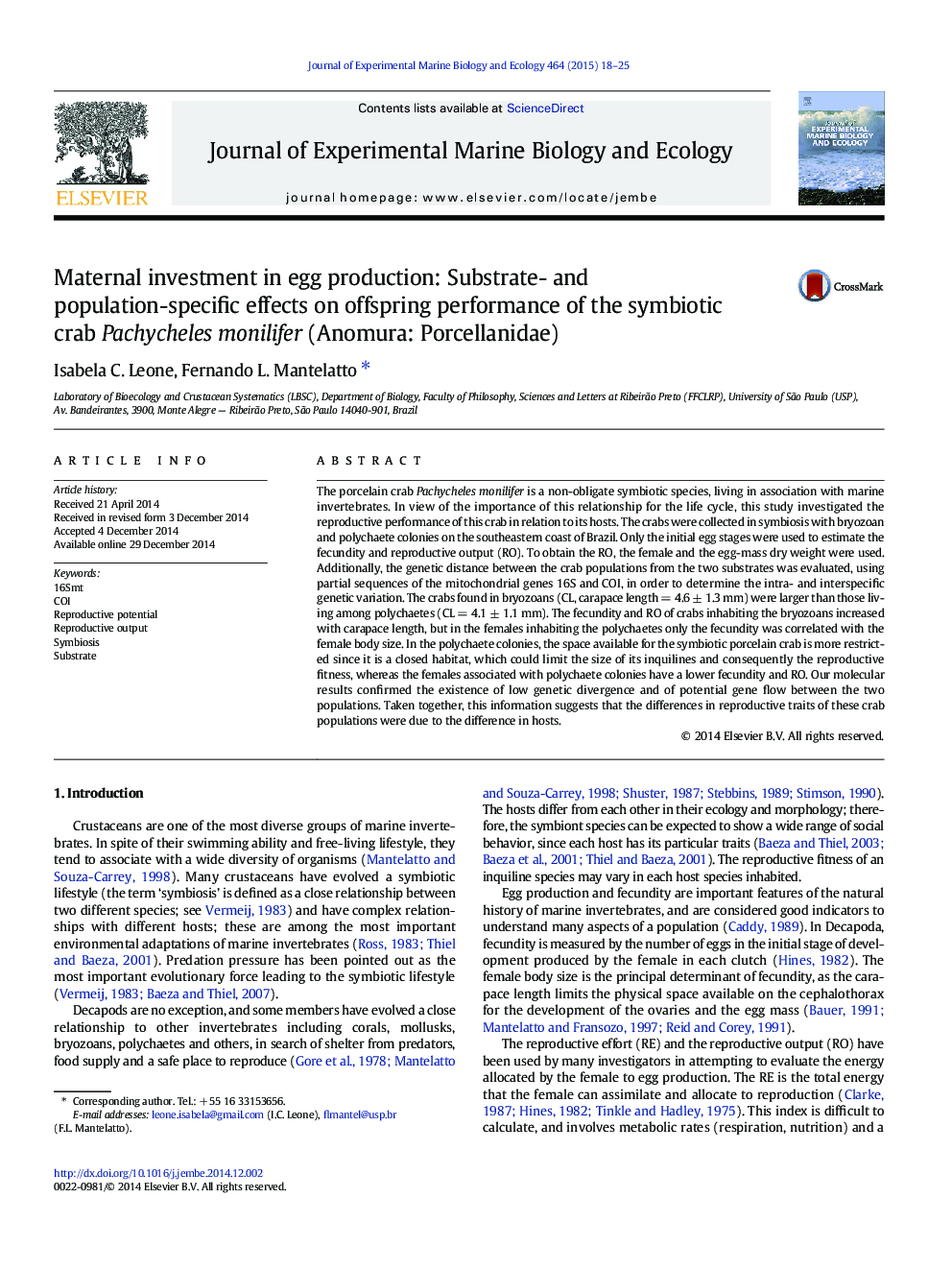| کد مقاله | کد نشریه | سال انتشار | مقاله انگلیسی | نسخه تمام متن |
|---|---|---|---|---|
| 4395452 | 1618411 | 2015 | 8 صفحه PDF | دانلود رایگان |
عنوان انگلیسی مقاله ISI
Maternal investment in egg production: Substrate- and population-specific effects on offspring performance of the symbiotic crab Pachycheles monilifer (Anomura: Porcellanidae)
دانلود مقاله + سفارش ترجمه
دانلود مقاله ISI انگلیسی
رایگان برای ایرانیان
کلمات کلیدی
موضوعات مرتبط
علوم زیستی و بیوفناوری
علوم کشاورزی و بیولوژیک
علوم آبزیان
پیش نمایش صفحه اول مقاله

چکیده انگلیسی
The porcelain crab Pachycheles monilifer is a non-obligate symbiotic species, living in association with marine invertebrates. In view of the importance of this relationship for the life cycle, this study investigated the reproductive performance of this crab in relation to its hosts. The crabs were collected in symbiosis with bryozoan and polychaete colonies on the southeastern coast of Brazil. Only the initial egg stages were used to estimate the fecundity and reproductive output (RO). To obtain the RO, the female and the egg-mass dry weight were used. Additionally, the genetic distance between the crab populations from the two substrates was evaluated, using partial sequences of the mitochondrial genes 16S and COI, in order to determine the intra- and interspecific genetic variation. The crabs found in bryozoans (CL, carapace length = 4.6 ± 1.3 mm) were larger than those living among polychaetes (CL = 4.1 ± 1.1 mm). The fecundity and RO of crabs inhabiting the bryozoans increased with carapace length, but in the females inhabiting the polychaetes only the fecundity was correlated with the female body size. In the polychaete colonies, the space available for the symbiotic porcelain crab is more restricted since it is a closed habitat, which could limit the size of its inquilines and consequently the reproductive fitness, whereas the females associated with polychaete colonies have a lower fecundity and RO. Our molecular results confirmed the existence of low genetic divergence and of potential gene flow between the two populations. Taken together, this information suggests that the differences in reproductive traits of these crab populations were due to the difference in hosts.
ناشر
Database: Elsevier - ScienceDirect (ساینس دایرکت)
Journal: Journal of Experimental Marine Biology and Ecology - Volume 464, March 2015, Pages 18-25
Journal: Journal of Experimental Marine Biology and Ecology - Volume 464, March 2015, Pages 18-25
نویسندگان
Isabela C. Leone, Fernando L. Mantelatto,